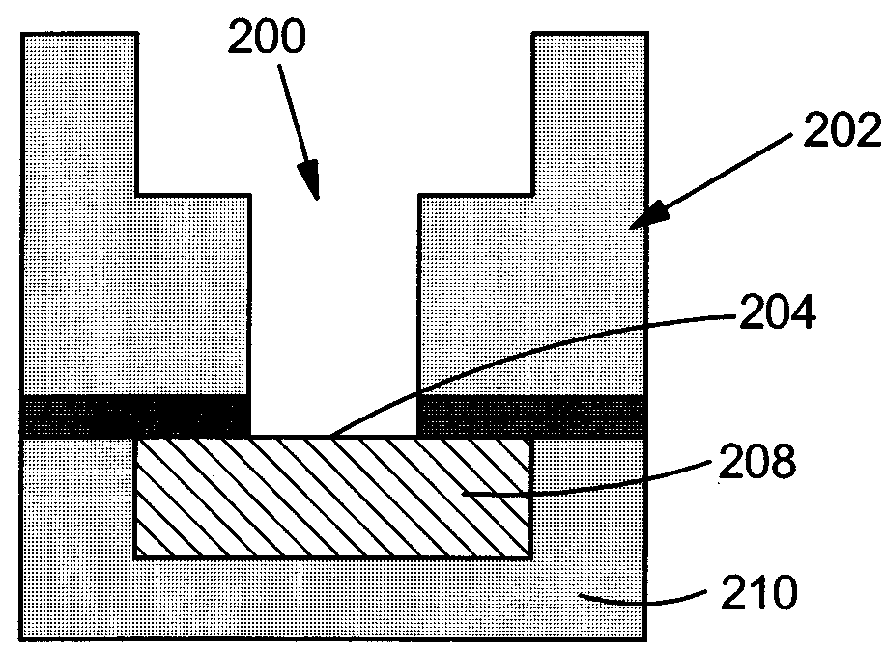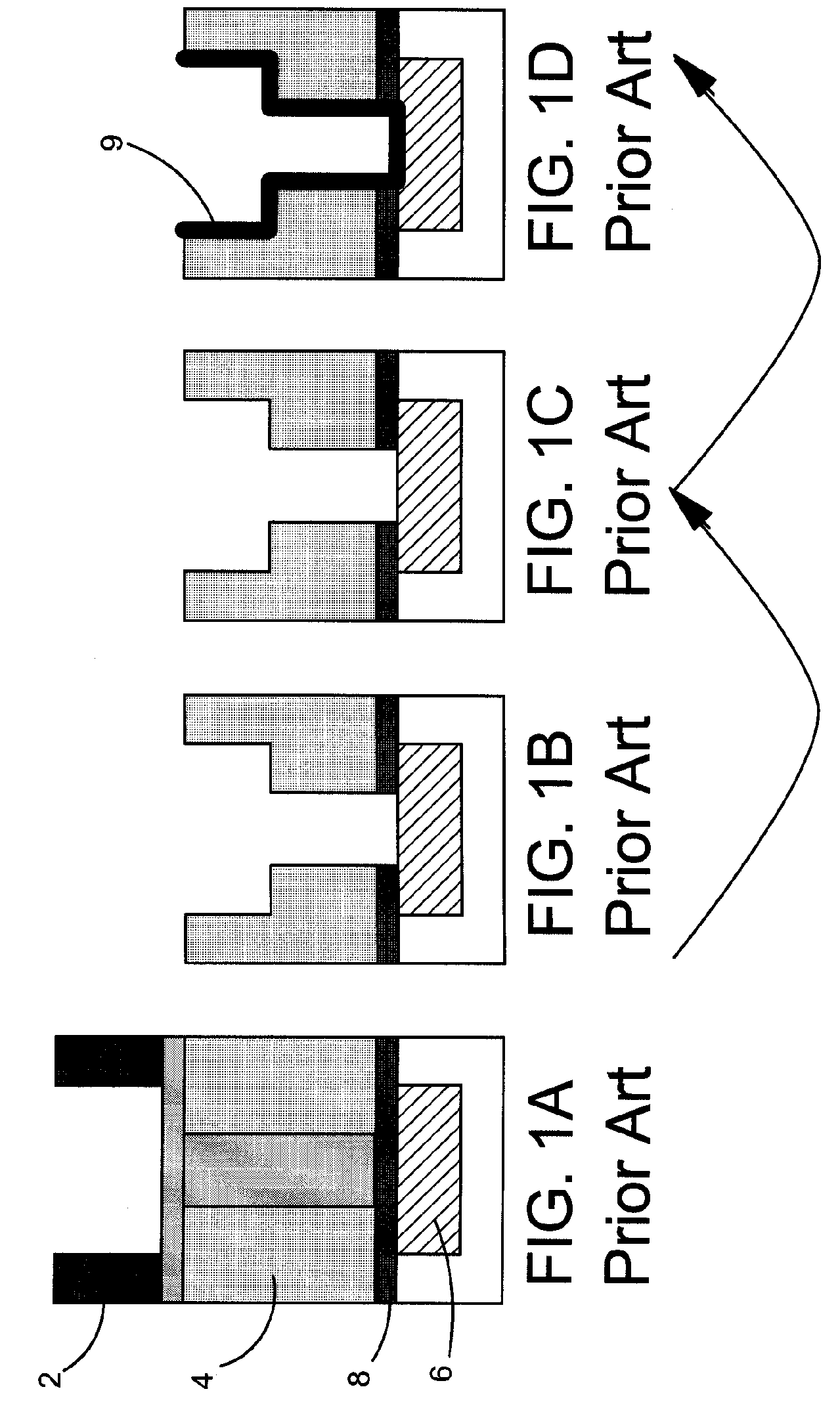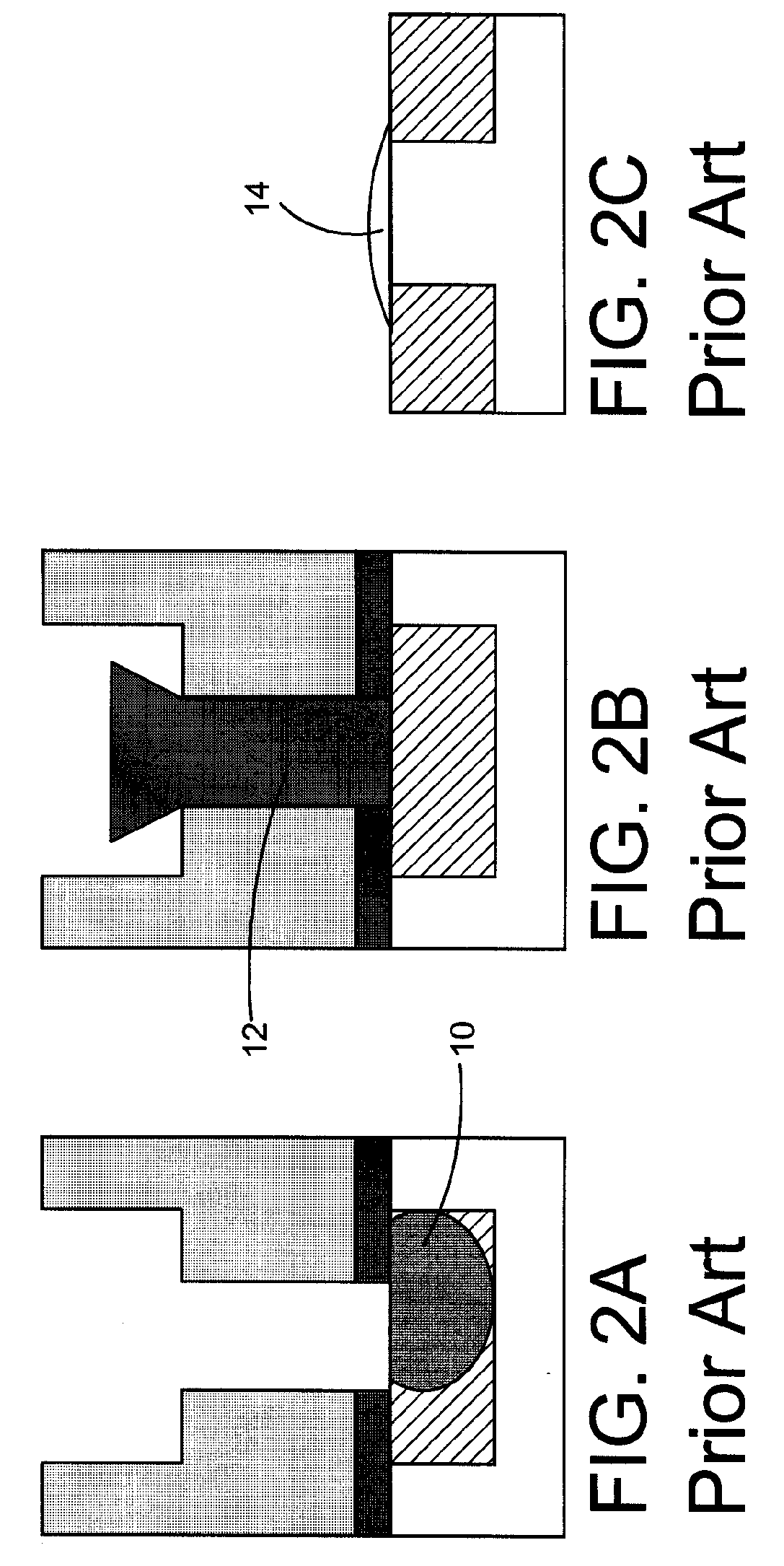Preventing damage to metal using clustered processing and at least partially sacrificial encapsulation
- Summary
- Abstract
- Description
- Claims
- Application Information
AI Technical Summary
Benefits of technology
Problems solved by technology
Method used
Image
Examples
Embodiment Construction
[0022] With reference to the accompanying drawings, FIG. 3 shows a schematic representation of a clustered tool 100 including at least one clustered chamber 102A-E (only five shown), including an etching chamber (e.g., 102A). Each embodiment of the invention uses clustered tool 100 such that metal is not exposed to an ambient prior to being encapsulated according to the invention. “Clustered” indicates that different chambers of the same etching tool are used and a robot handler (not shown) is used to move wafers 103 from a load lock 104 between chambers.
[0023] Turning to FIGS. 4-11, methods of preventing metal exposure to ambient during semiconductor fabrication will now be described.
[0024] Referring to FIG. 4, in one general embodiment, a first step includes forming an opening (e.g., a dual damascene opening) 200 in a structure 202 exposing a metal surface 204 in a bottom of opening 200. Structure 202 may include any now known or later developed dielectric material such as fluor...
PUM
 Login to View More
Login to View More Abstract
Description
Claims
Application Information
 Login to View More
Login to View More - R&D
- Intellectual Property
- Life Sciences
- Materials
- Tech Scout
- Unparalleled Data Quality
- Higher Quality Content
- 60% Fewer Hallucinations
Browse by: Latest US Patents, China's latest patents, Technical Efficacy Thesaurus, Application Domain, Technology Topic, Popular Technical Reports.
© 2025 PatSnap. All rights reserved.Legal|Privacy policy|Modern Slavery Act Transparency Statement|Sitemap|About US| Contact US: help@patsnap.com



